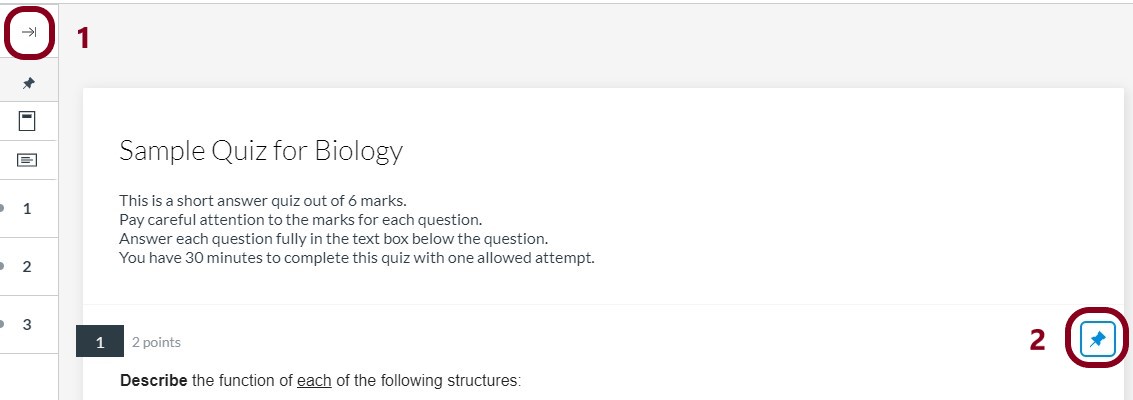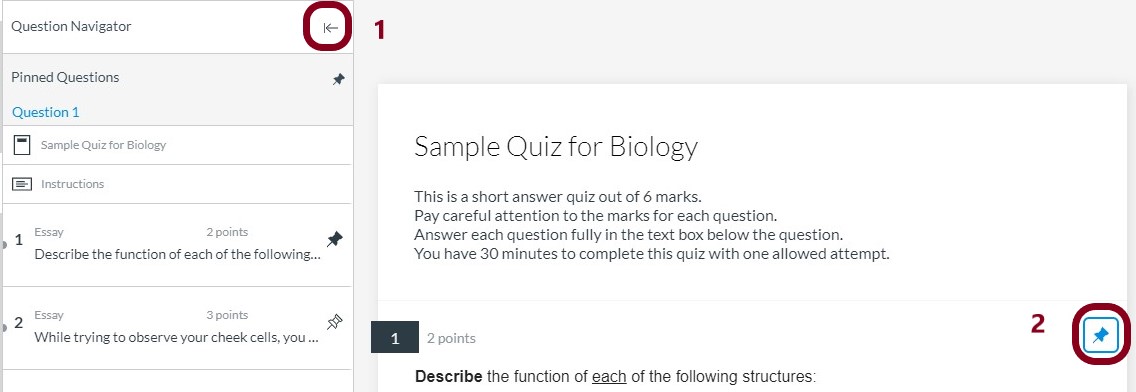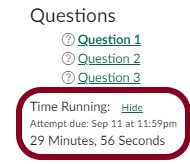
Tara Million, Ph.D Student, Indigenous Studies – Photo by Julia Million, CC by 2.0
Brette D. W. Kristoff, Graduate Student – Communications Specialist, GMCTL, December 11, 2020
Even the very idea of final exam season is enough to raise a students’ blood pressure! But don’t sweat it…sometimes, opening your books is the hardest part! Study smarter, not harder, with these Canvas Study Tips.
Some USask Study Tips:
- Focus on the process, not the outcome. Start by simply immersing yourself in your Canvas course content. Once you’re more familiar, it won’t feel so scary!
- Engage in Active Studying. Simply reading and rereading your notes is not studying. Reading and review are important “pre-studying” steps, but you must also actively engage with the material. You also need to connect and give meaning to what you are reading. Here are some active studying tips we like:
- Take notes when reading or watching lectures.
- Create concept maps, or other visual aids to help your brain make sense of all the information.
- Use a story, an acronym, or a rhyme to help retain names, dates, and ideas.
- Take time for you.
- Schedule regular study breaks which includes getting outside, being physically active, and remembering to eat.
- Take some time to call or connect with your loved ones.
- Review these USask remote learning studying tips.
Review Canvas Course Content and Panopto Lectures:
A good place to begin when preparing for final exams is to review the course syllabus before studying. Yes…dust off that old thing and review the course outline, chapter titles, and the course outcomes as described by the instructor at the beginning of the term. Then, go back and highlight the areas most relevant for the final exam:
- Questions you might ask yourself include: What topics will be covered on the final exam? Of these topics, which ones do I feel most competent in and which areas or chapters do I feel the least confident in?
Tips for Avoiding Procrastination
- Plan out your exam schedule, and pencil in study time. This will help you develop a more accurate plan of how much time you have to prepare for each exam. Creating and committing to a study schedule is a good way to stay organized and be more prepared!
- Set time-limits on your social media apps, or keep your mobile phone in a different room while studying to limit distractions. Dividing your study time into reasonable chunks is a good stratgey. Set an alarm for 20-30 minutes and leave your phone in the other room. When the time is up, you can get up and stretch and have a bathroom break, and then set the alarm again.
- Keep your internet tabs limited and organized by using a different window for each of your courses. Keep related tabs open, close all the rest.
Be Prepared for a Different Experience
Exams in Canvas will need new strategies.
- If this is the first time you’re doing an exam in Canvas Quizzes (or Canvas New Quizzes), know that the quiz tool can be set up to show only one question at a time and prevent you from returning to a previous question. So the exam-taking strategies you used in the past (like looking over the whole exam first, and planning your time and order of doing questions), might not apply for this kind of exam, so you’ll need to be flexible and ‘go with’ the situation.
- If you can go back to other questions, look for the question name in the right sidebar, if your quiz looks like this.
 You can click the flag next to a question name/number as a reminder to go back to that question. The flag then appears beside the question name in the righ sidebar. .
You can click the flag next to a question name/number as a reminder to go back to that question. The flag then appears beside the question name in the righ sidebar. . - Or if your quiz is like the one below, click on the pin icon [1] to bold it, marking that question for review later, and click on the Question Navigator arrow [2], to reveal previous question details.

- Collapse the Question Navigator again with the same arrow.

- Watch the “Time Elapsed” or “Time Remaining” below the questions list in the
 right- hand sidebar to track your time, shown below, or top – middle for New Quizzes.
right- hand sidebar to track your time, shown below, or top – middle for New Quizzes.
Good luck on all your finals!
We acknowledge that the University of Saskatchewan’s main campus is situated on Treaty 6 Territory and the Homeland of the Métis. We pay our respect to the First Nations and Métis ancestors of this place and reaffirm our relationship with one another.
For more support options with Canvas, see the USask Student Canvas page.



